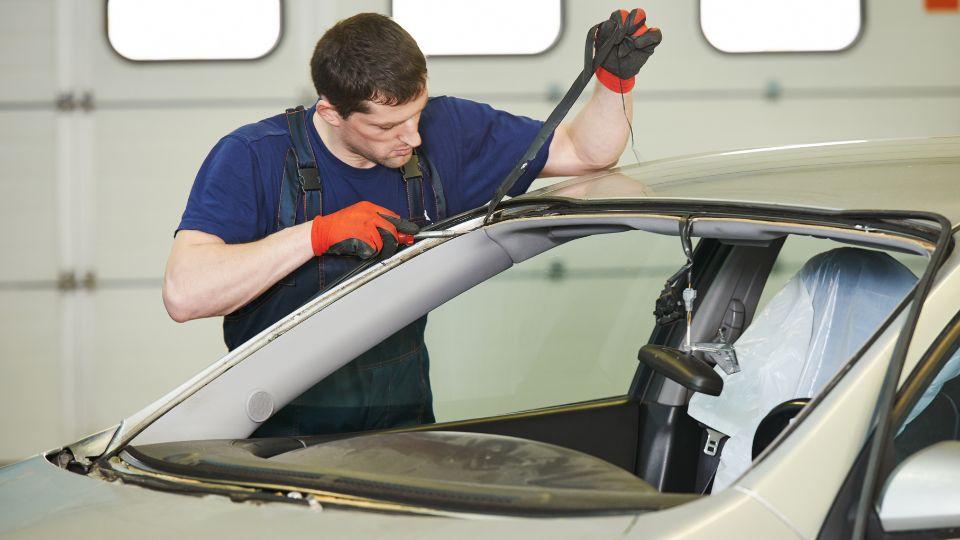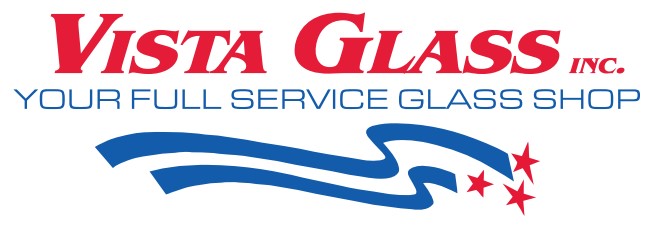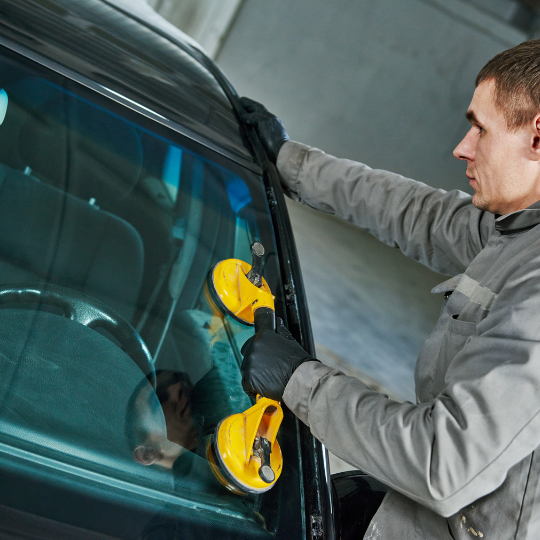When it comes to vehicle maintenance, one of the most crucial aspects that often gets overlooked is windshield replacement. Many people don’t think much about their windshields until they encounter a crack or chip, but a damaged windshield can be a serious safety hazard. Understanding when and why you might need a replacement can help you make better decisions and ensure your vehicle remains safe and reliable.
Understanding Your Windshield
Your windshield is a crucial part of your vehicle’s safety system. Made from laminated safety glass, it comprises two layers of glass with a plastic layer in between. This design helps the windshield stay intact if it cracks, minimizing the risk of injury from flying shards. Beyond providing clear vision, the windshield also supports the vehicle’s structure and aids in the deployment of airbags during a collision. Its strength helps keep passengers secure and maintains the car’s structural integrity. Understanding the role and construction of your windshield underscores the importance of addressing any damage promptly to ensure continued safety and vehicle performance.
When to Replace Your Windshield
Knowing when to replace your windshield is essential for both safety and compliance with legal requirements. Here are some common scenarios that warrant a replacement:
- Large Cracks and Chips: If the crack or chip is larger than a quarter, it’s usually a good idea to replace the windshield. Larger damages compromise the integrity of the glass and can lead to further issues if not addressed promptly.
- Cracks in the Driver’s Line of Sight: Even small cracks or chips directly in the driver’s line of sight can be distracting and pose a hazard. They can also distort vision, making it harder to see the road clearly.
- Damage from Accidents: If your vehicle has been in an accident, even if the damage isn’t immediately apparent, you should have your windshield inspected. Impact from accidents can cause hidden damage that may worsen over time.
- Significant Delamination: Delamination is when the layers of glass start to separate. This can be caused by prolonged exposure to the sun or poor-quality glass. If you notice any signs of delamination, it’s time for a replacement.
When it comes to vehicle maintenance, one of the most crucial aspects that often gets overlooked is windshield replacement. Many people don’t think much about their windshields until they encounter a crack or chip, but a damaged windshield can be a serious safety hazard. Understanding when and why you might need a replacement can help you make better decisions and ensure your vehicle remains safe and reliable.
Understanding Your Windshield
Your windshield is a crucial part of your vehicle’s safety system. Made from laminated safety glass, it comprises two layers of glass with a plastic layer in between. This design helps the windshield stay intact if it cracks, minimizing the risk of injury from flying shards. Beyond providing clear vision, the windshield also supports the vehicle’s structure and aids in the deployment of airbags during a collision. Its strength helps keep passengers secure and maintains the car’s structural integrity. Understanding the role and construction of your windshield underscores the importance of addressing any damage promptly to ensure continued safety and vehicle performance.
When to Replace Your Windshield
Knowing when to replace your windshield is essential for both safety and compliance with legal requirements. Here are some common scenarios that warrant a replacement:
- Large Cracks and Chips: If the crack or chip is larger than a quarter, it’s usually a good idea to replace the windshield. Larger damages compromise the integrity of the glass and can lead to further issues if not addressed promptly.
- Cracks in the Driver’s Line of Sight: Even small cracks or chips directly in the driver’s line of sight can be distracting and pose a hazard. They can also distort vision, making it harder to see the road clearly.
- Damage from Accidents: If your vehicle has been in an accident, even if the damage isn’t immediately apparent, you should have your windshield inspected. Impact from accidents can cause hidden damage that may worsen over time.
- Significant Delamination: Delamination is when the layers of glass start to separate. This can be caused by prolonged exposure to the sun or poor-quality glass. If you notice any signs of delamination, it’s time for a replacement.

Essential Information for Windshield Replacement
Replacing your windshield is more than just fixing a crack; it’s an essential part of vehicle safety. A properly installed windshield ensures the structural integrity of your car, supports airbag deployment, and keeps you safe in the event of an accident. Understanding the materials used and the installation process is crucial. Laminated safety glass, which is standard for modern windshields, provides durability and helps hold the glass together upon impact.
Additionally, knowing when a replacement is necessary versus a simple repair can save you both time and money. Large cracks, chips in the driver’s line of sight, or damage from accidents typically require a full replacement. Always consult a professional to assess the damage and recommend the best course of action.
What You Need to Understand About Replacing Your Windshield
Replacing your windshield involves more than just removing the old glass and installing a new one. It requires careful attention to detail to ensure that the new windshield is properly aligned and securely bonded. The process starts with assessing the damage to determine if a replacement is necessary. A professional will then remove the damaged windshield, prepare the frame, and install the new glass using high-quality adhesive.
Understanding the differences between OEM and aftermarket glass is also important. OEM glass is made by the original manufacturer and usually guarantees a perfect fit, while aftermarket glass might be less expensive but can vary in quality. Ensuring that the glass meets safety standards and comes with a warranty can provide peace of mind and protect your investment.
The Replacement Process
Replacing a windshield involves several steps, and it’s crucial to have it done by a professional to ensure it meets safety standards. Here’s a general overview of what to expect:
- Assessment: A professional will assess the damage to determine whether a repair or replacement is necessary. They will check the size, location, and severity of the damage.
- Removing the Old Windshield: The old windshield will be carefully removed using special tools. This process involves cutting the adhesive that holds the windshield in place.
- Preparing the Frame: Once the old windshield is removed, the frame will be cleaned and inspected. Any old adhesive will be removed, and the frame will be prepared to ensure a proper seal for the new windshield.
- Installing the New Windshield: The new windshield will be placed into the frame and secured with a strong adhesive. This adhesive needs time to cure, so you may be asked to avoid driving for a few hours.
- Final Inspection: After the adhesive has set, the installer will conduct a final inspection to ensure that everything is properly aligned and that there are no leaks.
How to Navigate the Windshield Replacement Process
Navigating the windshield replacement process can seem daunting, but knowing what to expect can simplify the experience. Start by getting an assessment from a qualified technician who can evaluate the damage and determine whether a repair or replacement is needed. If a replacement is necessary, the technician will remove the damaged windshield, clean the frame, and prepare it for the new glass.
Once the new windshield is installed, it’s essential to follow the technician’s instructions regarding the curing time for the adhesive. This typically means avoiding driving for a few hours to ensure a secure bond. Understanding these steps can help you manage the process smoothly and ensure that your vehicle remains safe and roadworthy.
Everything You Need to Know Before Replacing Your Windshield
Before replacing your windshield, there are several factors to consider to ensure a successful outcome. First, assess the extent of the damage to determine if a replacement is necessary. Cracks larger than a quarter or those in the driver’s line of sight generally require a new windshield. Second, choose between OEM and aftermarket glass based on your budget and preference for quality.
Additionally, check if your insurance policy covers windshield replacement, as this can significantly reduce your out-of-pocket expenses. Ensure that the replacement is performed by a certified technician who uses high-quality materials and adheres to safety standards. Proper preparation and knowledge can help you make informed decisions and maintain your vehicle’s safety and integrity.
A Complete Overview of Windshield Replacement
Windshield replacement is a critical procedure that involves more than just swapping out glass. The process begins with evaluating the damage to decide if a repair is feasible or if a full replacement is needed. A professional will then carefully remove the old windshield, prepare the vehicle’s frame, and install the new windshield with a strong adhesive to ensure it adheres properly.
A complete overview also includes understanding the types of glass available, such as OEM and aftermarket options. OEM glass is often preferred for its guaranteed quality and fit, while aftermarket glass can be a more cost-effective alternative. Ensuring that the replacement meets safety standards and comes with a warranty is crucial for long-term peace of mind and vehicle safety.
Conclusion
Understanding the intricacies of windshield replacement can make all the difference in maintaining your vehicle’s safety and performance. Whether you’re dealing with a minor chip or a major crack, addressing windshield issues promptly is crucial. Remember to consult with a professional to determine the best course of action, and ensure that any replacement glass meets safety standards for your peace of mind.
If you’re in the Vail, AZ area and need expert windshield replacement or repair, Vista Glass of Vail is here to help. Contact us today to schedule an assessment or to learn more about our services. Your safety is our top priority, and we’re dedicated to providing top-notch solutions for your windshield needs.

